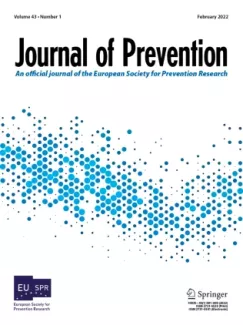Becoming a Member of the Prevention Club: Development of Interdisciplinary Prevention Terminology

Introduction
Prevention science is interdisciplinary, drawing upon multiple fields of research and practice to develop integrated knowledge. A challenge facing the field is the proliferation of different terms with the same meaning, and of terms with different meanings. This can create confusion in communication, affect evaluation standards, and ultimately also affect the implementation of preventive interventions. Contributing to the development of evidence standards for preventive interventions, this article describes the process and results of interdisciplinary prevention terminology development in Estonia.
Methods
Following the Participatory Action Research (PAR) approach, different co-design tools were used during a four-year process to help understand terminological needs, generate ideas, draw concept maps, and test examples of definitions in different target groups.
Results
Thirty-five terms were tested, refined, and published. Six of these represent the main concepts relevant to prevention and intervention evaluation: vulnerability, prevention, preventive intervention, well-being, process evaluation, and impact evaluation. Several candidate terms were omitted for being confusing, ambiguous, or misunderstood in terms of the type or mechanism of intervention, the quality of evidence, or the quality of practice.
Discussion
Collaborative and participatory methods can be used to bridge the divide in language and to help pursue consensus definitions. Shared understanding is needed both nationally and internationally between disciplines, sectors, implementation levels, and professions, as the involved parties include policymakers, researchers, innovators, and practitioners in the domains of healthcare and public health, education, safety, social work and welfare, justice, and culture. The development of an interdisciplinary prevention glossary described in this paper was novel in its approach and has the potential to support successful continuing interdisciplinary collaboration in the prevention field.